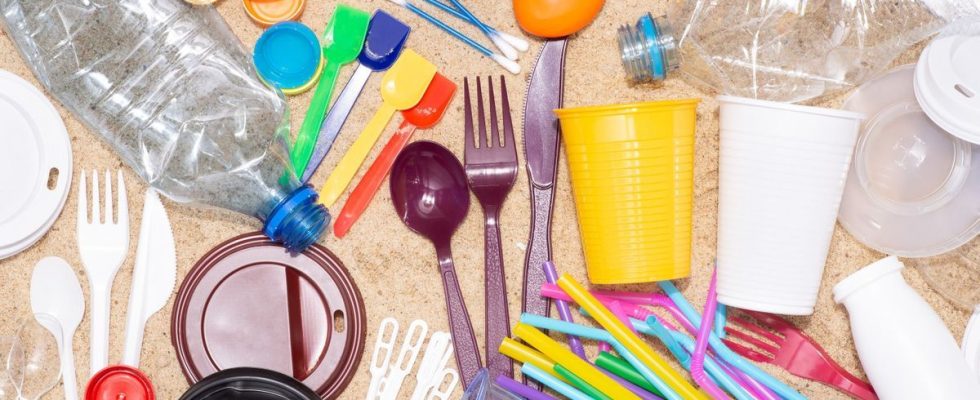Published on
Updated
Reading 2 mins.
The future international treaty against plastic pollution must include an “immediate ban” on most single-use plastics, says the World Wide Fund for Nature (WWF) which published two technical reports on Monday paving the way for a liberation for the humanity from its addiction to plastics.
For the WWF, the future treaty must impose “an immediate ban on unnecessary plastic fibers in wet wipes, cigarette filters and tea bags, single-use items — such as plastic cutlery, plates, cups, cotton swabs and e -disposable cigarettes — as well as microplastics in toothpaste and skincare products“.
“Where it is not possible to ban harmful products immediately, the treaty must ensure their complete elimination by 2035 at the latest“, recommends the WWF, which publishes its reports in the run-up to the 2nd round of treaty negotiations, scheduled in Paris from May 29 to June 2.
These negotiations, conducted under the aegis of the United Nations and its Environment Program (UNEP), must lead by the end of 2024 to a legally binding treaty to resolve this major crisis, which threatens human health and worsens the loss of biodiversity.
In 2019, around 353 million tonnes of plastic waste was produced, of which 22% was abandoned (open dumps, burning or dumping in nature), according to the OECD.
Increasing production
To influence the negotiations, the WWF publishes on Monday a detailed roadmap, consisting of two reports produced by Eunomia.
The first “identifies the most harmful plastic products” by evaluating their composition, their uses, their life cycle and their ecological impact. It then classifies them by category, ultimately divided into two groups: “those that can be significantly reduced or eliminated in the short term (class I)“and those who, failing that, “require global control measures to promote responsible recycling, management and disposal (Class II)“.
Class I includes, in addition to those to be banned immediately, plastic bottles, most food packaging or packaging for hygiene products, as well as fibers or plastic additives in tires, clothing and cosmetics, sources of microplastics polluting water and air.
The second report then lists “specific control measures to reduce and eliminate the production, consumption and trade of Class I plastics, and to manage and safely move Class II plastics“, taking into account the socio-economic and industrial realities of the world.
“We are locked into a system where we produce much more plastic than any one country can properly handle.“, alarmed Marco Lambertini, a senior official of the WWF, in a press release
“On the current trajectory, by 2040 global plastic production will double, plastic leakage into our oceans will triple, and the total volume of plastic pollution in our oceans will quadruple.“, warns the former boss of the WWF.
Nearly half of plastic is used for cheap, short-lived or single-use products, which can take hundreds of years to degrade, WWF recalls, pointing out that “most of these products are consumed in high and upper middle income countries“.
“The industry has so many technologies to provide more sustainable alternatives and substitutes“and legislation must push them to implement them, adds Mr. Lambertini.
One study estimated that in 2015, 60% of all plastics ever produced were disposed of in landfills or in nature, or 4.9 billion tonnes. Globally, according to the OECD, 9% is recycled, 19% incinerated and 50% disposed of in controlled landfills, while 22% is abandoned.
